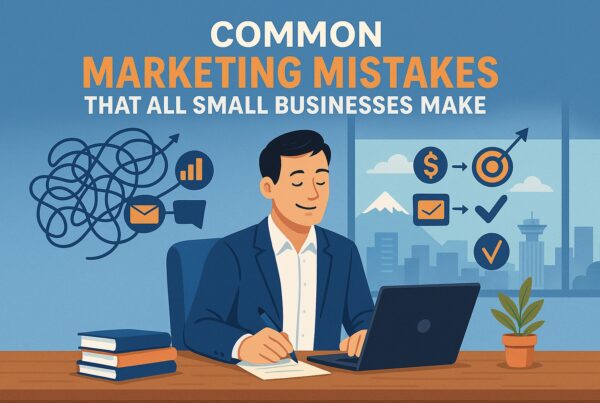Crafting an Exceptional Company Culture: Key Elements and Practical Tips
Curious about company culture and its impact on your business? Company culture is the collective manifestation of values and practices that carve your organization’s identity. This critical aspect goes beyond merely shaping the work atmosphere—it’s a powerful driver of recruitment, employee satisfaction, and overall business performance. In this guide, join us as we dissect the defining features and practical guidelines to foster a resilient and adaptive company culture.
Key Takeaways
- Company culture is an organization’s dynamic and vital aspect, encompassing shared values, behaviours, and practices that can significantly influence employee engagement, job satisfaction, retention, and overall business success.
- Organizational culture can generally be categorized into four types: clan, adhocracy, market, and hierarchy, each with unique characteristics that align with different business environments and objectives.
- Key elements of an effective company culture include a clear mission and vision, strong leadership, employee engagement, open communication, and work-life balance, all of which contribute to better performance and a more positive workplace environment.
Understanding Company Culture

Company culture, also known as organizational culture, collectively shapes a company’s identity and working environment through a blend of shared values, attitudes, behaviours, and standards. Building company culture encapsulates the essence of a company and is deeply rooted in its company’s values. In layman’s terms, it represents the personality of a company, with its influence permeating every aspect of the company’s culture, including:
- punctuality
- communication style
- contractual agreements
- employee benefits
Surprisingly, only 31 percent of employees agree that their organization has a well-communicated value system, which is essential for a healthy workplace culture. Contrary to popular belief, company culture is not a static concept. It’s a living, evolving persona that grows and changes along with the business, underlining the importance of building a strong company culture.
A robust company culture can significantly boost employee retention and productivity by:
- Creating a comfortable, supportive, and valued work environment
- Creating an atmosphere where employees feel connected to the organization’s values, leading to a higher level of engagement and job satisfaction
- Establishing a business environment conducive to success
Fundamentally, a healthy company culture transcends creating a positive work environment.
Defining Company Culture
Company culture is a composite of shared values, attitudes, behaviours, and standards, all of which play a role in shaping an organization’s identity and work environment. It is a crucial aspect that influences the overall dynamics and performance within the company. A strong company culture is integral to employee satisfaction and overall business success. The primary elements of a healthy company culture encompass:
- The vision or mission statement
- Values
- Practices
- Open communication
- Mutual respect
- Shared goals
- A commitment to employee growth
It’s influenced by factors such as top leadership principles, the nature of the business, company values, policies, individual employees, and leadership style.
The established communication norms within a company, be they open and friendly or more reserved, significantly influence the shaping of its culture.
The Importance of Company Culture
Company culture substantially influences business success and profitability, making company culture important. It impacts employee satisfaction immensely, as empowering employees through resources, support, and decision-making authority increases job satisfaction, motivation, and productivity. A positive company culture significantly impacts employee well-being, resulting in higher engagement and productivity, lower absenteeism, and improved employee retention.
Moreover, a culture that emphasizes celebrating achievements and valuing feedback can enhance profitability. In such a culture, managers, through their responses to feedback, serve as trusted coaches, thereby reinforcing the company’s culture.
Empower Your Culture, Transform Your Business:
Ready to elevate your organization’s culture and drive success? Unlock the full potential of your team with tailored coaching. Book a call now and embark on a journey to redefine your company culture, fostering a workplace where every member thrives. Let’s shape a future where your business values align seamlessly with employee satisfaction and performance.
Click here to start transforming your company culture today!
Four Types of Organizational Culture

While every company has its unique culture, organizational culture can generally be classified into four types:
- Clan culture
- Adhocracy culture
- Market culture
- Hierarchy culture
These classifications provide a comprehensive understanding of how shared values, attitudes, and practices can shape different types of organizational cultures.
Let’s delve deeper into these classifications to understand their distinct characteristics and how they contribute to a company’s success.
Clan Culture
Clan culture is a form of corporate culture characterized by equitable distribution of power among employees and a familial mindset. It fosters a cooperative and familial atmosphere by prioritizing commitment, participation, and loyalty. The primary attributes of a clan culture encompass equitable power distribution among employees, shared comprehension, dedication, and allegiance.
In such a culture, communication is not just encouraged but valued as a key element, with barriers between executives and employees broken down to foster a sense of community and teamwork. This culture has the potential to positively influence the performance of a company by enhancing employee motivation, satisfaction, and commitment.
Adhocracy Culture
Adhocracy culture is commonly observed in organizations with a strong emphasis on innovation and creativity, as well as a frequent occurrence of change. It represents a form of organizational culture characterized by:
- Organic decision-making
- A focus on task accomplishment
- Reduced emphasis on official authority
- Increased emphasis on individual initiative
- Innovation
- Risk-taking
- Flexibility
- Experimentation
These attributes define an adhocracy culture.
This culture facilitates the support of innovation and creativity within a company by enabling employees to generate new ideas and cultivating an environment that is innovative and adaptable. Moreover, it fosters decentralized leadership, individual initiative, and empowers teams or employees to make autonomous decisions.
Market Culture
Market culture refers to a style of culture that emphasizes strong competition and a results-driven, market-oriented approach. It is characterized by a results-oriented work environment that prioritizes external success, competitiveness, and achieving targets. Market culture impacts employee behavior by placing emphasis on competition and individual achievement, fostering a focus on performance driven by incentives and rewards, which can motivate employees to excel.
However, it may also lead to heightened competition among colleagues, which could be a potential drawback of this culture.
Hierarchy Culture
Hierarchy culture in a business setting encompasses a strong emphasis on structure, order, and rules. It is a type of organizational culture that is founded on shared core values, top-down decision-making, and internal predictability. The implementation of such a culture within an organization presents advantages such as clear career paths, efficient leadership, and well-defined department roles. However, it may also impede creativity, restrict employee participation, and lead to inflexible structures that face challenges with rapid change or innovation.
Industries that typically adopt a hierarchy culture are those in which stability and clear structure are of utmost importance, such as oil and gas, finance, healthcare, and government agencies.
Key Elements of an Effective Company Culture

While the categories of organizational cultures offer a wide framework for understanding company cultures, identifying the key elements that contribute to an effective company culture is also vital. These elements include:
- A clear mission and vision
- Strong leadership
- Employee engagement
- Open communication
- Work-life balance
These components not only shape the culture of a company but also significantly influence its overall performance and success.
Clear Mission and Vision
A clear mission and vision act as guiding principles for an organization and impart direction and purpose to employees. They offer:
- Guidance
- Concentration
- Communication
- Influence on strategic decision-making
- Motivation for employees to strive towards a shared objective.
A clear mission and vision impact employee motivation and productivity by aiding employees in comprehending the significance of their work, aligning them with the company’s mission, and offering a sense of purpose and guidance.
Strong Leadership
Leadership represents another critical element of a successful company culture. Effective leadership sets behavioural and work ethic standards within an organization, playing a significant role in shaping the company culture. Leaders create and reinforce the norms and values in the workplace environment, thereby shaping the company culture.
A resilient leader exhibits integrity, self-awareness, courage, respect, compassion, and resilience. They possess the ability to influence others, are transparent, encourage their team, prioritize relationship-building, make decisive decisions, demonstrate humility, and empower their employees.
Employee Engagement
Employee engagement refers to the strength of the mental and emotional connection that employees experience with their jobs and the organization in which they are employed. It encompasses the degree of enthusiasm and dedication that a worker has towards their role. Significant factors that influence employee engagement encompass:
- Job satisfaction
- A sense of meaning and purpose
- Company culture
- Work environment
- Strong leadership
- A caring culture
- Meaningful work
- Regular feedback
- Recognition
- Opportunities for professional growth
A positive and supportive work culture plays a crucial role in fostering employee engagement, which in turn results in heightened productivity, improved employee experience, and a deeper sense of commitment to the organization.
Open Communication
Open communication is a vital element of an effective company culture. It facilitates:
- The expression of ideas, issues, and thoughts among employees
- Promoting transparency, trust, and collaboration
- Fostering collaboration among employees by cultivating a sense of teamwork, open-mindedness, trust, respect, and the exchange of ideas and opinions.
A company can foster open communication among its employees by:
- Demonstrating honesty, respect, and investment in employees’ goals
- Maintaining regular check-ins
- Adhering to a set schedule
- Soliciting feedback from employees
- Cultivating a culture of trust and psychological safety
Work-Life Balance
Advocating for work-life balance in a company’s culture leads to:
- Satisfied, healthy, and productive employees
- A more positive company culture
- Improved employee performance and productivity
- Reduced turnover
- Improved mental and physical health
- Increased job satisfaction
A positive and supportive culture is essential to ensure that employees receive proper support to progress in their careers while also maintaining a healthy personal life. Flexibility in company culture is significant as it fosters loyalty and satisfaction among the workforce, thereby improving office culture.
Practical Tips for Developing and Improving Company Culture

Having grasped the key elements of an effective company culture, it is worthwhile to explore some practical tips for cultivating and enhancing company culture. These steps can greatly enhance employee satisfaction and overall business success.
It’s essential to align company culture with core values and business goals to establish a strong foundation for the culture. Involving employees in this process ensures that their needs and preferences are taken into consideration, allowing for potential changes in culture over time.
Assess Your Current Culture
The initial step towards enhancing company culture involves:
- Assessing the current culture
- Reviewing the organization’s values
- Scrutinizing hiring practices
- Reviewing narratives
- Evaluating employee perceptions
- Observing behaviours
- Initiating discussions about employees’ interpretation of the culture
Companies need to be intentional about their company culture. This involves:
- Involving employees in the assessment process
- Aligning the hiring process with company culture
- Evaluating the onboarding process
- Gauging openness within the leadership
- Observing team dynamics
- Collecting and analyzing relevant data to understand the existing culture and identify areas for improvement.
Involve Employees in the Process
By involving employees in the decision-making process, a diverse range of viewpoints can be incorporated, fostering a sense of responsibility and commitment to the company culture. It ensures that their needs and preferences are taken into consideration, allowing for potential changes in culture over time.
This involvement assists in guaranteeing that the culture progresses in a manner that aligns with the entire workforce.
Align Culture with Business Goals
Aligning company culture with core values and business goals is crucial to establishing a strong foundation for the culture and enabling it to respond to changes in the business environment based on enduring principles rather than outdated methods.
Monitor and Adjust
Consistently monitoring company culture enables the identification of any lack of cohesion and the implementation of appropriate measures. It directly impacts company performance on crucial metrics such as finances, employee retention, and innovation. Monitoring also aids in identifying areas for enhancement and areas that require additional attention. Indicators that suggest a need for adjustment in a company’s culture include:
- a low level of employee engagement
- a lack of diversity and inclusion
- a lack of community
- a lack of respect for one’s time
- limited opportunities for growth
- poor communication
- a work-life imbalance
Companies are advised to assess and adjust their culture regularly, with a suggested schedule in place to monitor cultural changes.
Real-World Examples of Successful Company Cultures

Analyzing real-world examples makes understanding the abstract concept of company culture easier. In this regard, let’s delve into some examples of successful company cultures prioritizing employee satisfaction, innovation, and growth, offering valuable lessons on how to build a strong company culture effectively.
Google’s culture is famous for prioritizing innovation, collaboration, and the well-being of its employees. The company’s culture is characterized by openness, innovation, excellence, a hands-on approach, and a small-company-family rapport, fostering an environment where every individual feels valued. Google cultivates a culture of innovation by acknowledging that innovation can originate from various sources, placing a high emphasis on user needs, striving to achieve significant improvements, and giving precedence to technical insights over market research.
They utilize digital tools to facilitate easy and secure collaboration, fostering a sense of community and teamwork. This culture has a significant impact on employee well-being by:
- Fostering increased productivity
- Promoting general well-being
- Empowering employees to make meaningful contributions
- Providing various perks to ensure employee happiness and satisfaction.
Zappos
Zappos, an online shoe and clothing retailer, is recognized for its distinctive company culture that values exceptional customer service, employee empowerment, and a vibrant work environment. The company’s culture is defined by its emphasis on treating everyone like family and ensuring a good cultural fit for hires. They prioritize exceptional customer service by integrating it into the company’s ethos, implementing distinctive strategies for customer interaction, and emphasizing repeat business as an indicator of service excellence.
Zappos has implemented various strategies to empower its employees, such as decentralizing the organizational structure, promoting personal authenticity, offering essential tools and training, and cultivating a sense of ownership over their roles. They cultivate a vibrant work environment by prioritizing a lively company culture centred around core values such as ‘Delivering Happiness’, promoting participation in team-building activities, embracing cultural touchstones like ‘The Zappos Culture Book’, and implementing recognition programs, all of which contribute to fostering an enjoyable and positive workplace.
Netflix
Netflix, a popular streaming service, places value on freedom, responsibility, and high performance in its company culture. The fundamental components of Netflix’s corporate culture encompass esteemed behaviours such as judgment, selflessness, courage, communication, inclusion, integrity, passion, and innovation. Netflix exemplifies a culture of freedom and responsibility by fostering independent decision-making, promoting transparent information sharing, and maintaining a balance between freedom and accountability as well as self-discipline.
They encourage high performance among employees by:
- employing, rewarding, and tolerating only fully developed adults
- establishing a culture that fosters performance through competitive aspects
- prioritizing decision-making, transparent information sharing, and direct communication
The culture enables talented individuals to collaborate effectively, creating an environment conducive to innovation, which is crucial for establishing a successful workplace and contributing to Netflix’s success.
Summary
Company culture is the lifeblood of an organization, influencing everything from productivity and employee satisfaction to overall business success. It’s a complex blend of shared values, attitudes, behaviours, and standards that shape an organization’s identity and work environment. Whether it’s the collaborative clan culture, the innovative adhocracy culture, the competitive market culture, or the structured hierarchy culture, each type of organizational culture brings its unique strengths and challenges. By understanding these different types of cultures and learning from successful companies like Google, Zappos, and Netflix, organizations can effectively build a strong company culture that aligns with their mission, values, and business goals. Remember, a healthy company culture is not just about creating a positive work environment but a business environment that drives success.
Cultivate a Culture of Excellence:
Transform your company’s heartbeat into its biggest strength. Connect with our expert coach to craft a culture that resonates with your values and vision. Schedule your consultation today to start building a vibrant, productive workplace where employees and business goals align harmoniously. Don’t wait to make your company culture a cornerstone of your success.
Frequently Asked Questions
What are the 4 C’s of company culture?
The 4 C’s of company culture are collaboration, community, creativity, and corporate values, which form the foundation for a positive and productive work environment.
What are the 3 C’s of company culture?
The three C’s of company culture are Communication, Core Values, and Commitment to Excellence. Focusing on these areas can have a significant impact on the overall success of an organization.
What is an example of good company culture?
A good example of a company with a strong culture is one that has employee recognition programs, mentorship initiatives, mental health support, and social justice efforts in place. These elements contribute to a positive and supportive work environment.
What exactly constitutes company culture?
Company culture consists of shared values, attitudes, behaviours, and standards that shape a company’s identity and working environment. It influences every aspect of the working environment.
What are the different types of organizational culture?
There are four main types of organizational culture: clan culture, adhocracy culture, market culture, and hierarchy culture. Each type has its own unique characteristics and traits that shape the organization’s values and behaviours.



